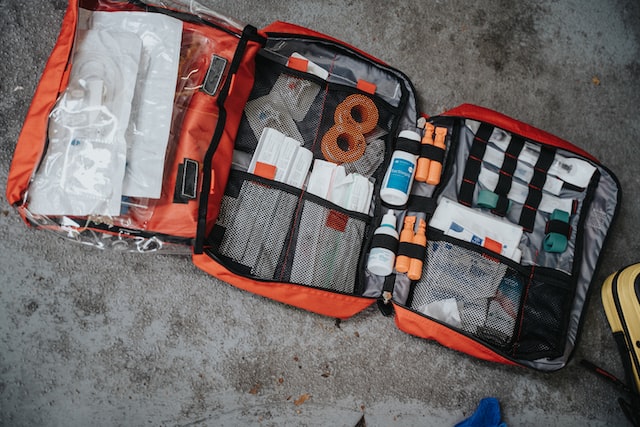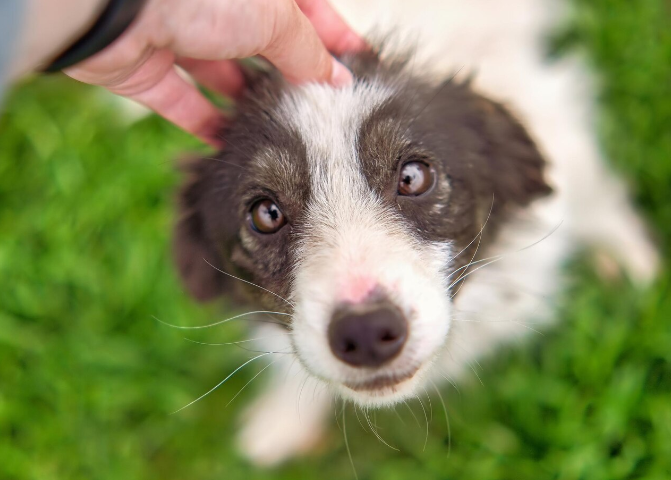
Raising a dog is a transformative experience that helps us learn how to become more caring, loving, respectful, and particularly patient! Taking care of a dog is like taking care of a family member who just does not speak (although Husky owners may disagree with that).
Ensuring our paw family members are healthy and well-taken care of is our main responsibility! Observing our dogs to identify any signs of potential health issues is a crucial part of this responsibility. Just like small children, dogs are curious to explore their surroundings, which exposes them to various factors, that may also affect their health.
Eye infections are a common health condition in dogs, that can be caused by various factors, including viruses, bacteria, pollen, etc. Recognizing the symptoms of eye infections and knowing how to treat them at home can help keep your furry friend healthy.
While consultation with a veterinarian is always recommended if you suspect your pet may have an eye infection or another health condition, being able to address some health issues at home can be very helpful! In today’s article, we will discuss the common causes, and symptoms of eye infections in dogs and will give you tips on how to treat these at home.
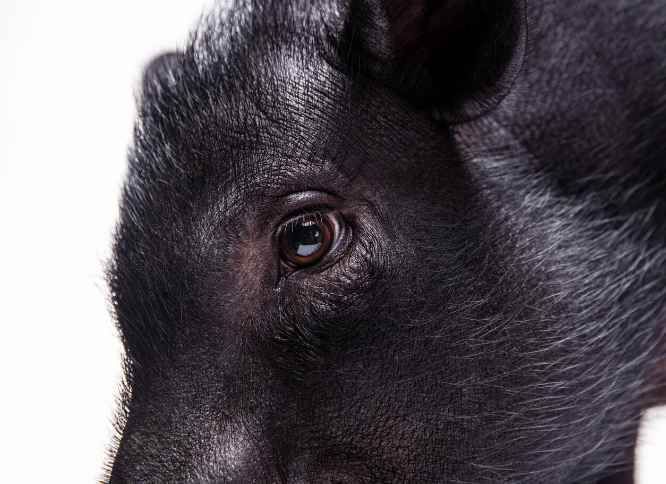
How to Recognize an Eye Infection In Your Dog?
It is essential to be mindful of any changes in your dog’s appearance and/or behavior, as these could indicate an underlying health condition. When it comes to eye infections, the following symptoms are most likely to present:
Redness
Redness is one of the most common signs of an eye infection or irritation.
If you notice that the whites of your pup’s eyes (known as the sclera) are red, then this could indicate inflammation, irritation, or allergy.
Eye Discharge
Eye infections often cause eye discharge, which can vary in color and consistency depending on the type and severity of the infection.
Typically, the discharge in viral infections is more likely to be clear or watery. However, if there is a secondary bacterial infection, it can become mucous-like.
Bacterial infections, on the other hand, are characterized by rather thick, yellow/greenish eye discharge, that can even be pus-like.
Another important thing to note, which applies to viral and bacterial infections in general, is that antibiotics should be prescribed for the treatment of bacterial infections only. They do not work against viruses.
Watery Eyes
Talking about eye discharge and types of infections, we also need to mention “watery eyes” as another symptom, indicating the presence of infection.
Increased tear production, leading to watery eyes, is a common response to eye irritation or inflammation. Dogs may produce more tears in an attempt to clear away the infection or allergen.
Swelling
Swelling around the eyes or eyelids may be a result of the response of your dog’s immune system to the infection.
Also, swelling can be caused by the accumulation of fluids in the tissues due to inflammation.
Squinting / Blinking
If you notice that your paw friend is blinking excessively or squinting, this might be a sign of discomfort.
However, these behaviors could also be symptoms of foreign objects getting to the eyes such as dust, pollen, or debris; allergies to environmental factors or certain types of food; ulcers; scratches, etc.
It is essential to closely monitor your dog and consult a veterinarian if needed. In some cases, it could be a simple issue that can be addressed quickly, while in others it could be a serious underlying health condition, that requires immediate treatment.
Sensitivity to Light
Squinting could also indicate sensitivity to light. If your paw companion is squinting and also trying to avoid spaces with a bright light and seek more shaded areas, they may be sensitive to light.
This could indicate an eye infection. However, sensitivity to light (photophobia) could also be caused by infections, injuries, neurological disorders, medications, etc. In any case, you should consult a veterinarian as soon as possible.
Rubbing / Pawing at the Eyes
If your furry friend is constantly rubbing their eyes, they may be trying to alleviate their discomfort.
If there is an eye infection, pawing at the eye, is very likely to worsen the irritation and even injure the eyes. In such situations, we would highly recommend that you make an appointment with a veterinarian immediately, and also consider putting a cone on your dog to prevent them from rubbing their eyes.
Change in Eye Color
Cloudiness can be a symptom of an eye infection, that has caused the cornea (the clear outer layer of the eye) to become cloudy. This, in turn, reduces vision clarity.
Additionally, the iris may appear dull or change in color due to inflammation, which could be a symptom of a severe infection.
Visible Third Eyelid
The third eyelid, also known as the “nictitating membrane”, is a thin, transparent membrane located in the inner corner of the eye.
Inflammation or infection can cause the third eyelid to become more prominent or visible, indicating a health issue.
If you recognize any of these symptoms in your dog, it is crucial to seek veterinary assistance in a timely manner! A veterinarian can do a thorough examination, including an assessment of the eyes, and recommend appropriate treatment to address the underlying cause of the infection and alleviate your dog's discomfort.
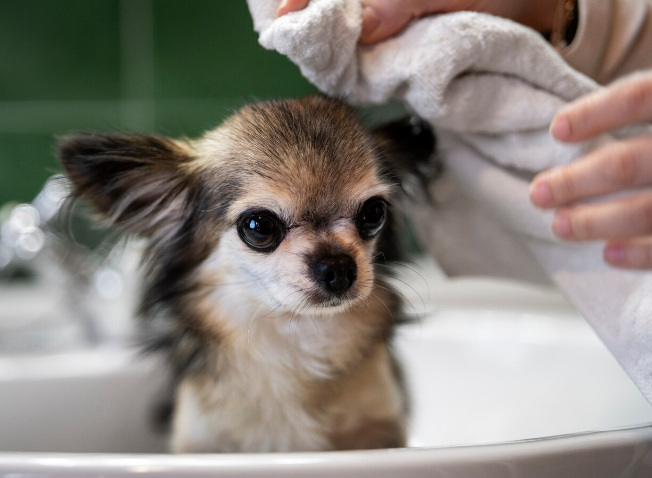
Home Remedies to Consider
Let’s first clarify that you should always consult your dog’s veterinarian before applying any products to your dog’s eyes. If you are not confident about what the underlying cause of the issue is, you can easily exacerbate the problem instead of helping your paw friend.
We will list below several mild remedies that are known for their healing properties and that can be applied at home.
However, before applying any of these remedies, do a quick test and apply a small amount of the product to your dog’s eye and monitor their reaction. This will help you identify any potential allergic reactions. Never apply new products to your dog’s skin or change their food abruptly, if you are not sure that there won’t be any side effects.
Saline Solution
A saline solution is made by mixing salt with distilled water, creating a solution that closely mimics the body's natural fluids. It is often used for various medical and hygiene purposes, including cleaning wounds and rinsing eyes.
A saline solution for your dog's eye infections can be an effective home remedy, but it is essential to ensure that it is made correctly and used safely.
You should use distilled or sterile water only and mix it with plain / non-iodized salt (without additives). If you don't have distilled water, you can boil tap water for at least 5 minutes to kill any potential bacteria. Let it cool down to room temperature before using it.
Also, before starting to prepare the solution, you should thoroughly wash your hands with soap and water to avoid exposing the solution to impurities or pathogens.
How to prepare it?
To prepare a saline solution at home, you will need approximately 1 cup of distilled water and 1 teaspoon of plain salt. This is the standard ratio for a saline solution.
The next step is to mix the water (distilled or boiled) and salt in a clean container until the salt is completely dissolved.
How to apply it?
Now that you have a saline solution, let’s explain how to use it properly!
Again, it is essential to always wash your hands before applying any medications, including homemade remedies. So, the first step is to ensure your hands are clean.
Use a clean dropper or syringe (remove the needle first) to apply the solution. When applying it, you should gently hold your dog’s head to ensure it is in the proper position. Be extra careful when getting closer to their eyes.
Apply a few drops of the solution into the affected eye, while avoiding touching it with the dropper/syringe to prevent contamination.
If there is any excess solution or discharge from the eye, you should gently wipe it away with a clean and soft gauze/pad or a piece of clothing.
You can repeat the steps above 2–3 times a day. Remember to store any unused saline solution in a clean container for no longer than 24 hours to make sure it remains sterile.
Chamomile Tea / Herbal Eyewash
Chamomile tea is known for its soothing and anti-inflammatory properties and has been actively used in many households!
How to prepare it?
You will need a chamomile tea bag (if you do not have any, then you can use a teaspoon of dried chamomile flowers). Alternatively, you can use other herbs, like calendula.
How to apply it?
Place the tea bag/herbs in boiling water (you will need about a cup of water) and let it soak for 10 minutes. Then, remove it and let the tea cool to room temperature. Make sure it is lukewarm/cool, before applying it, so that it does not burn your dog’s eye.
The application process is similar to that of saline solution: Use a cotton ball or gauze pad to apply the chamomile tea after it has cooled. Gently soak it in the tea and apply it to your dog’s eye.
When applying any medications or home remedies, make sure to use separate pads for each eye to prevent any infections from spreading.
Please, remember to not pour the tea directly into your dog’s eye.
Cold Compress
How to prepare it?
You only need a clean and soft piece of clothing, and cold water; or as an alternative- a few ice cubes, a ziplock bag, and a towel.
How to apply it?
As you already know, you should thoroughly wash your hands first. Then, you should soak the piece of clothing in cold water and use it as a compress. If you have opted for the second approach, then you should place a few ice cubes in a ziplock bag, wrap it in a towel, and use it instead.
Apply a cold compress to your dog's closed eyes for a few minutes at a time. This can help reduce swelling and provide relief from discomfort.
Make sure there is no excess water. It should be wet but not dripping.
Coconut Oil
Coconut oil is known for its natural antibacterial and anti-inflammatory properties. A small amount applied around the eye area can help soothe irritation, however, you should ensure it doesn't get into the eye itself.
How to prepare it?
If you opt for coconut oil as a home remedy for your paw friend, make sure it is organic, virgin, and cold-pressed. It should be free of additives and any chemicals that may irritate your canine’s skin.
If it is solid, melt it first until it becomes liquid. Similarly to the other home remedies, coconut oil also shouldn’t be hot but rather lukewarm, so that it does not hurt your dog.
How to apply it?
When it comes to application, coconut oil can be applied either as eye drops or as an ointment for topical application. If your dog is sensitive to drops, and you find it difficult to hold their head, you can apply it on a clean gauze and gently treat the affected area without touching the eyeball.
Observe your dog’s eye and if you notice any side effects or adverse reactions, terminate its use immediately and consult a veterinarian.
Coconut oil should be applied for no more than a few days, a week maximum.
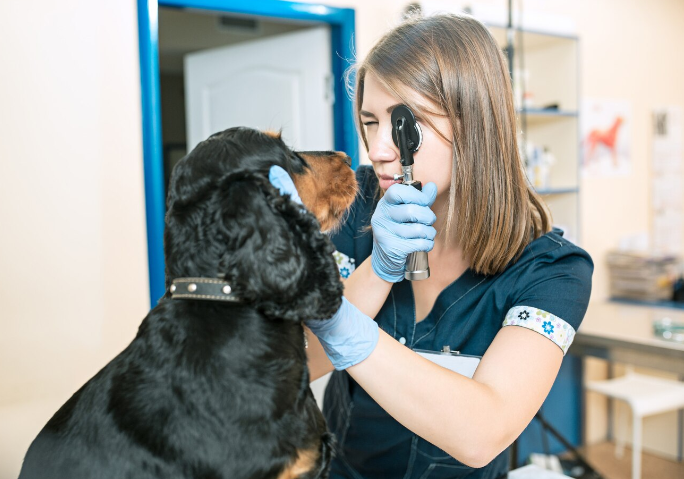
Preventive Measures
While preparing remedies at home can be very helpful to your furry friend, it is always better to take precautions and prevent potential issues instead of addressing problems when they are already present.
Regular Eye Checks
Regularly inspecting your dog’s eyes for any signs of irritation or infection is a necessary preventive care measure. It will help you keep track of your furry friend’s overall well-being and identify any potential issues in a timely manner.
This is also valid for your dog’s ears, nose, teeth, paws, nails, and abdomen.
Keep Your Dog’s Face (Eyes) Clean
Regularly clean the fur and any dirt/foreign bodies around your dog's eyes to prevent the buildup of discharge and potential infections.
This would be particularly helpful to very active dogs, who spend a long time outdoors, playing, chasing, and exploring the environment! If your furry buddy is very energetic and tends to explore and investigate, then they are more likely to be exposed to bacteria and impurities.
Avoid Irritants
To protect your canine from potentially harmful environments, you should monitor them, keep them under control, and restrict their access to such environments when needed.
For example, environments to avoid, include those with heavy dust, smoke, pollen, or other substances that can irritate your dog’s eyes.
Regular Veterinarian Checkups
Never miss your canine’s annual evaluations and any checkups that the vet may administer. They are professionals and will guide you in the best direction regarding your paw friend’s health.
Also, they will advise you on what medications or homemade remedies may be most suitable for your canine based on their condition.








